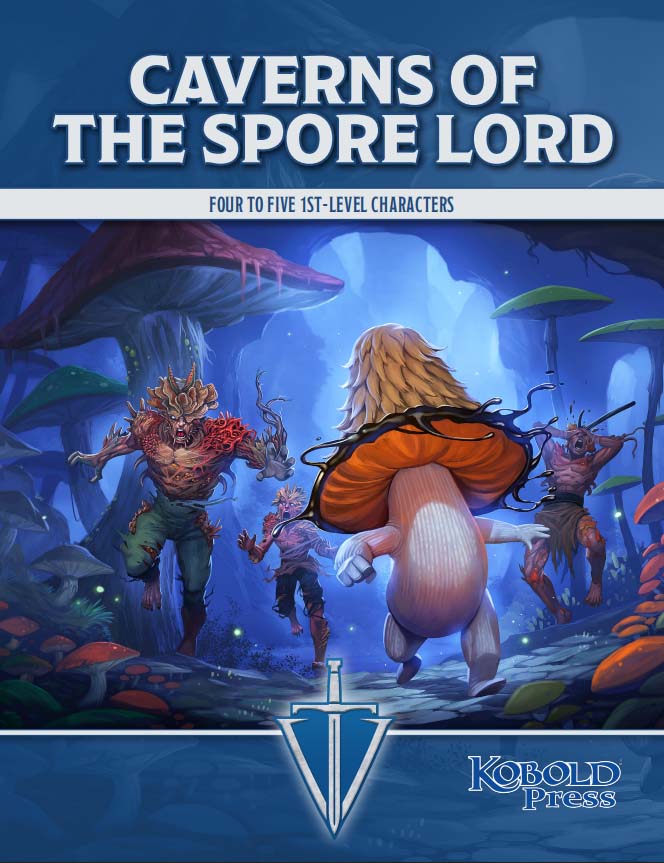 The Frying Pan or the Fire?
The Frying Pan or the Fire?
Welcome back to the table. In this session, the adventurers accidentally found their way into a nest of 6 vampire spawn that I had prepared for later in the story. The adventurers were all level 3, each vampire was level 5. My players were destined to lose.
What do you do when an encounter is too hard? What adjustments can you make in the middle of combat to scale the scene down to more reasonable odds?
Wednesday Night, April 26
Our heroes rested after their fight with the werewolves, relying on time to heal their wounds. Yet sleep was bittersweet. Only two days were left before the full moon, and Shump was cursed with lycanthropy. Learning of an old remedy, Shump, Val, Strass, and Tyrash set out to collect a vampire’s fang and wolf’s bane.
Following clues given to them by the local priest and his servant, the adventurers stood before a ramshackle house. Forcing their way in, Val and Strass interrogated the owner, a coffin maker by trade, until he explained that six vampires and the ingredient the heroes needed were upstairs.
One of the first rules about difficult encounters is this: Give your players warning. It may not seem like much, but letting your players think before they do something foolish both builds tension and lets your players feel more in control—even if they die. In this scene, my players knew an encounter was close. Their objective was upstairs as was the danger, so I gave them a moment to prepare.
There are a thousand ways that this encounter can go, but I want to touch on three options. Each has a different level of difficulty and each carries its own form of tension.
- Rumors around the town tell of a group of adventurers found dead and dismembered. They say six attackers were waiting to brutally execute them.
 You could outright battle your players, wielding the full might of your vampires to crush the adventurers. This encounter is too hard. You kill off most of or all the party, and players learn a hard lesson about running away. There is nothing wrong with this option. The encounter reminds players that they are not immortal.
You could outright battle your players, wielding the full might of your vampires to crush the adventurers. This encounter is too hard. You kill off most of or all the party, and players learn a hard lesson about running away. There is nothing wrong with this option. The encounter reminds players that they are not immortal.
Now let’s look at the tension. In this scenario, the tension comes at the beginning of the fight. The players know that the vampires will be hard. When the fighting starts, the players realize that they don’t stand a chance—the vampires are REALLY hard. The tension builds as players begin to die. This tension, while fun, tends to quickly become despair and frustration when the players realize that they were set up to fail.
- Storming into the room, Val and his companions search through the numerous coffins, uncovering slumbering vampires. In quick succession, they plunge a stake into each monster’s heart and watch as they wither and die. Leaving successful, our heroes return to their rooms in the inn.
Option two allows the players to feel powerful. They walk in, kill the vampires and leave with little more than splinters in their hands. This encounter is too easy. This teaches players they can overcome difficult enemies without much effort.
There isn’t much tension in this scene. After the initial worry of the challenge the players might face, the rest of the scene falls to the wayside.
Fortunately, a happy medium does exist. There are a lot of possibilities, but this is the one I chose.
- Bursting through the door, Val and his companions count twelve coffins in the quiet room. From below, the coffin maker’s quiet sob calls out, “the sun is setting…” The adventurers act quickly, prying open the closest two coffins. One is empty, the other occupied by a stirring figure. Plunging a stake through its heart, our heroes hear the sounds of other coffins shaking nearby.
This third option is where I found my balance. A single vampire was more than a match for the four adventurers and six would have outright slaughtered them. My players knew nothing of the true difficulties that come from fighting vampires, so I wanted them to get a taste but not overdose on the challenges they face.
I told my players that they had four rounds to kill the sleeping vampires before they began breaking free. After killing three of the six, I had one of the vampires free itself and attack the players with all its might. Now the players were given two objectives: fight the vampire’s onslaught or defend while trying to kill the other sleeping vampires. Complicating matters, some of the coffins were empty, costing the players a valuable turn if they happened to pick the wrong one.
Let’s look at the tension. In this scene, the tension increased as each new conflict was applied. The players enter the room, and like in option two, they realize that the vampires are asleep. By applying a timer, counting down until they awaken, the players are then forced to separate out their actions and try to beat the clock. When the vampire began fighting them, two conflicts emerged: defend and hunt sleeping vampires or focus on the awake vampire.
For my players, the encounter concluded with one of them unconscious and the others badly wounded. A single vampire was more than a match for them and they took to calling it a “vampire demon.” The outcome couldn’t have gone better as now my players are fearful of facing a vampire head on and will plan for confrontations in the future.
The final screams of the vampire still rang, “You will all be devoured,” as Strass pulled his axe from the beast’s back. Ripping the two fangs from the vampire, the adventurers made their way from the building and slipped off into the night. Only wolf’s bane remained.
Let’s sum up:
- Encounter adjustments come in different forms. From objective changes to wounded monsters to puzzles, there are many devices to help you scale your combat.
- There is never a wrong way to have an encounter play out. If you kill players, be ready for it. If your players kill everything, have a plan.
- Crafting encounters can be easy, managing them can be hard. Focus on your players’ interests when creating and running encounters, tailoring things for maximum fun.
See you at the table.


This is really helpful Jacob. Those of us who want the verisimilitude of allowing players to make their own choices also want to give them chances in a game mechanic which has character levels. Good article.
Thank you for the comment James! There is quite a balancing act between keeping choices and consequences realistic and also ensuring a fun and dynamic experience at the table. I am always at odds with deciding difficulty when constructing encounters or when an encounter suddenly occurs due to player decisions.